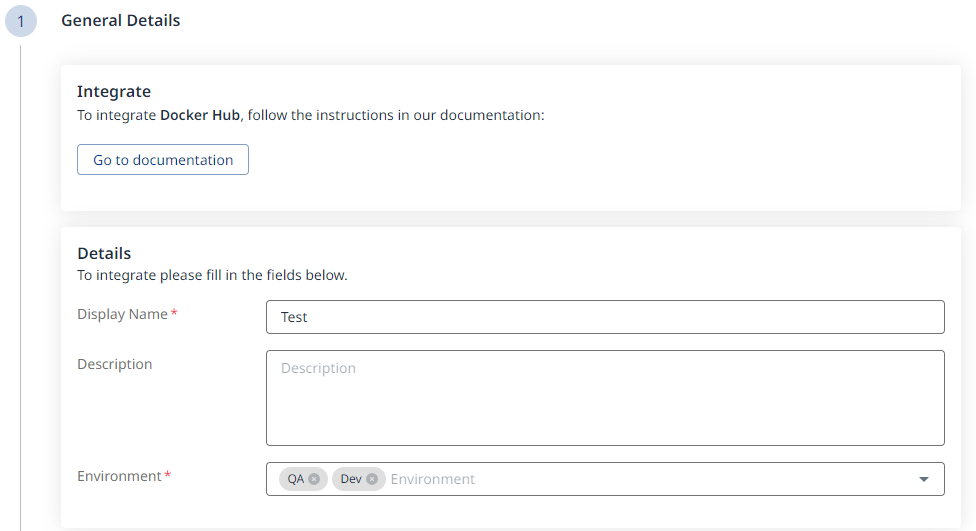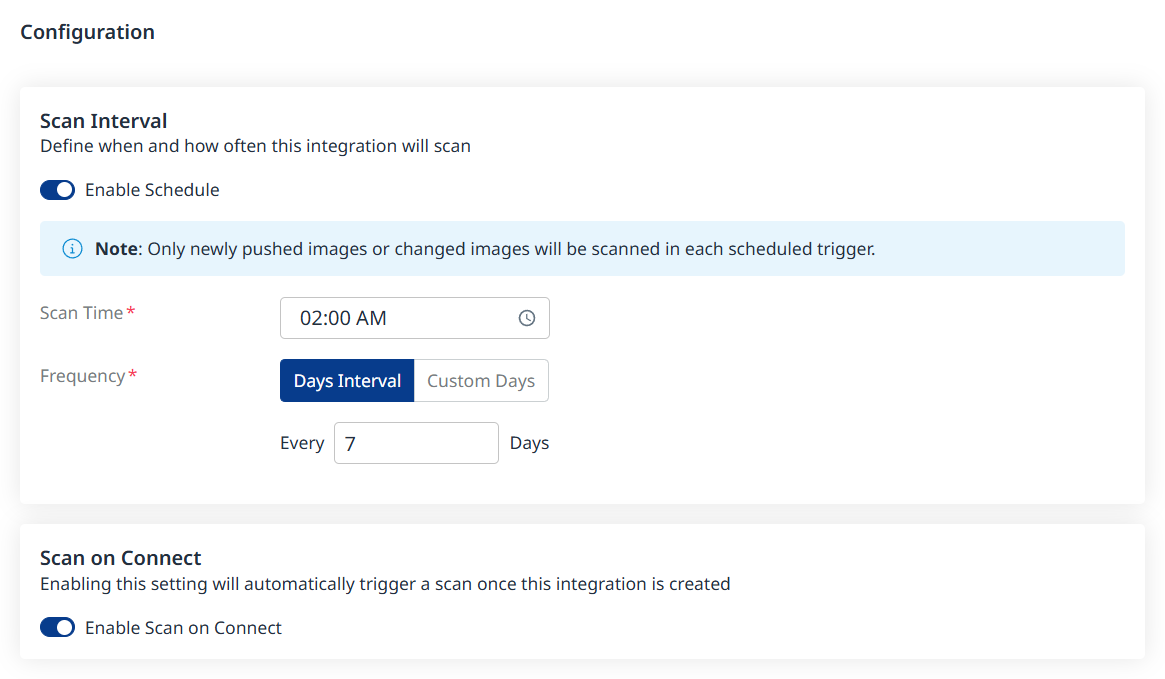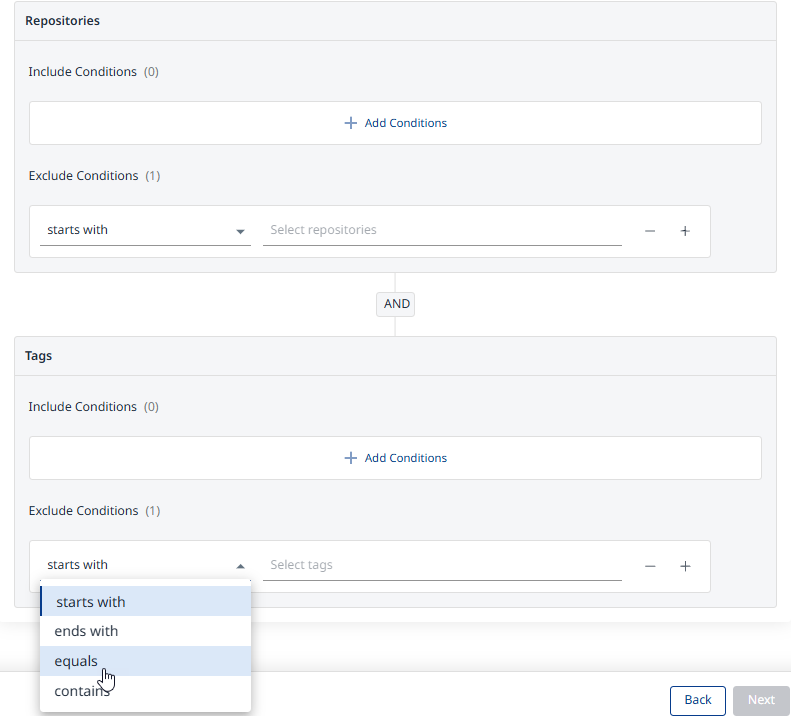Configure your private Docker Hub registry in the Mend Platform
Overview
The Mend CLI container image registry scanning solution can integrate with your private Docker Hub registry with a provided username and password.
Getting it done
Prerequisites before you scan a private Docker Hub with Mend Container
Your Mend user must be an organization administrator.
Have an existing and active Docker Hub account. No additional permissions are necessary.
Make sure that the user permissions include read permission to all requested repositories in the registry.
Docker API v2 is mandatory and must be enabled for the integration to work.
Set up your private Docker Hub registry configuration via the Mend Platform UI
In the Mend Platform, navigate to
→ Integrations.
Scroll down to the ‘Registries’ section and click ‘Docker Hub’

The Setup Wizard
Step 1 - General Details
Fill in the General Details fields:

a. Display Name
b. Description (optional)
c. Environment (multi-selection is supported)
Click the ![]() button at the bottom right to move on to Step 2 - Authentication.
button at the bottom right to move on to Step 2 - Authentication.
Step 2 - Authentication
Fill in the Authentication information:

a. Choose your Access Method (User & Password / PAT Token).
b. Fill in the user name and password/token, depending on your selection in (a) above.
c. Click the ![]() button at the bottom right to move on to Step 3 - Configuration.
button at the bottom right to move on to Step 3 - Configuration.
Docker PAT tokens start with the pattern: dckr_pat
More info can be found: https://docs.docker.com/security/for-developers/access-tokens/
Step 3 - Configuration
Fill in the Configuration information to define your scan schedule

Enable Schedule - Toggle off to disable scheduling.
Scan Time
Frequency
Scan on Connect - While toggled on, it means a scan will be triggered automatically once the integration setup is completed.
Scheduling image registry scans is crucial for maintaining the security and integrity of your container images. By default, a scan interval of 7 days will be applied. You can change the scan interval in 1-day increments or select specific days of the week when you wish for scans to be executed.
Note: After the first scan (in which the latest 10 tags are scanned), in every scheduled scan only newly pushed images from the registry or changed images will be scanned. This is because vulnerability and package updates occur automatically in an asynchronous manner, keeping the security information up-to-date without requiring new scans.
Click the ![]() button at the bottom right to move on to Step 4 - Summary, to view the summary of your setup as a final step before adding your registry.
button at the bottom right to move on to Step 4 - Summary, to view the summary of your setup as a final step before adding your registry.
Step 4 - Pull and Scan Inventory
Define which repositories and tags should be pulled and scanned using include/exclude filters:

All Images will be the default. When changing this to Selected Images as shown below, click Add Conditions to add Include and/or Exclude conditions, for both Repositories and Tags.

Step 5 - Summary
In this step, the summary of your input from steps 1-3 will be displayed. You can go back to the previous screens of the wizard to make changes, by clicking the ‘Back’ button at the bottom right corner of the screen. If you wish to confirm your configuration and add your registry, click the ‘Done’ button:

A Registry Added Successfully message will pop-up at the bottom-left corner of the user interface once the integration credentials and configuration have been verified:

Note: Before adding your registry, a connectivity check will be performed automatically, to ensure the credentials are valid and the registry is accessible for the integration.
Reference
Private Docker Hub parameters
Parameter | Description |
Display Name | Type the name of your registry. This will be displayed in the Integrations dashboard. |
Description | Optional. Provide any text. We recommend providing information that will help you remember the integration and the relevant registry. |
Environment | Select the type of environment of your private Docker Hub registry (multiple options can be selected). The environment options are:
|
User Name | Provide the relevant private Docker Hub registry username. Note: This is not the email address associated to the Docker Hub account. This setting is explicitly meant for the Docker Hub username. |
Password | Provide the relevant private Docker Hub registry user password. |
